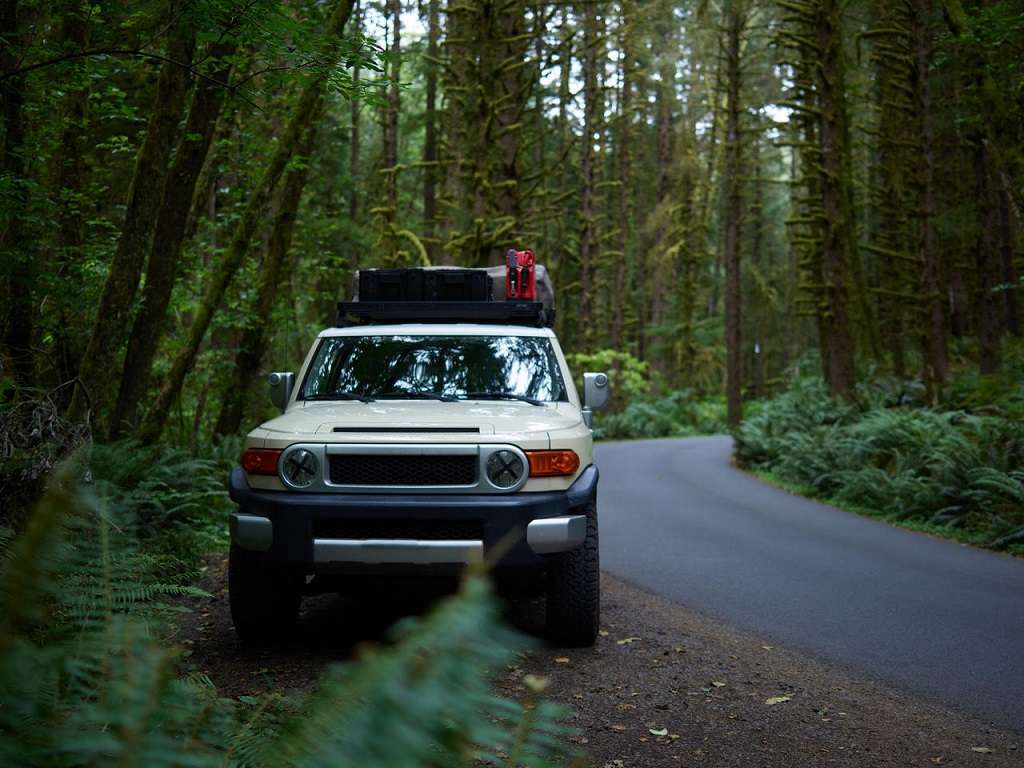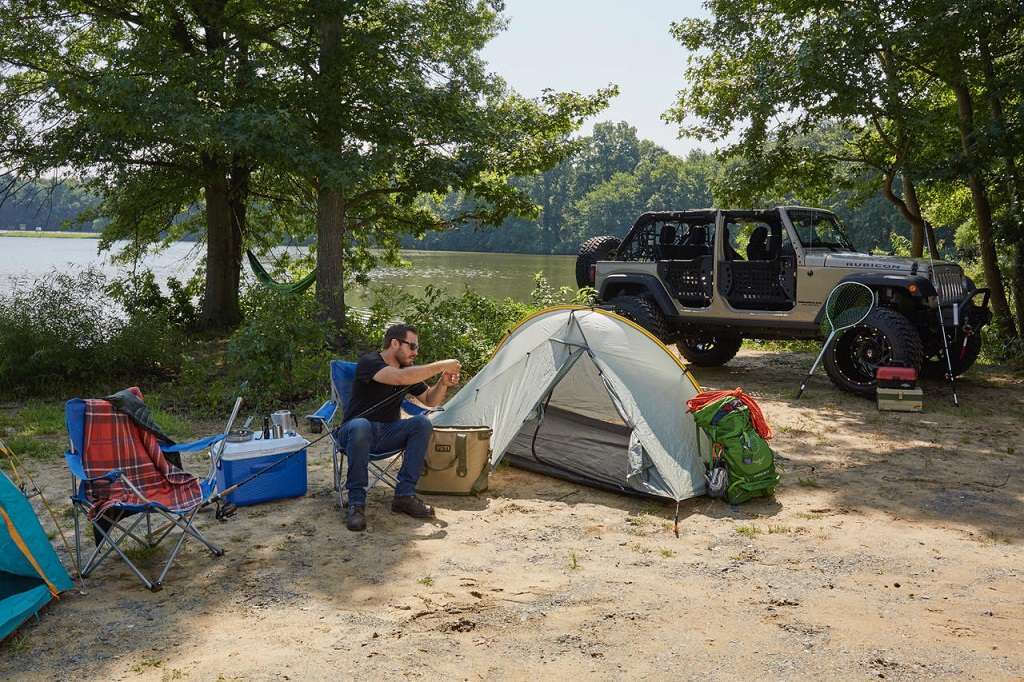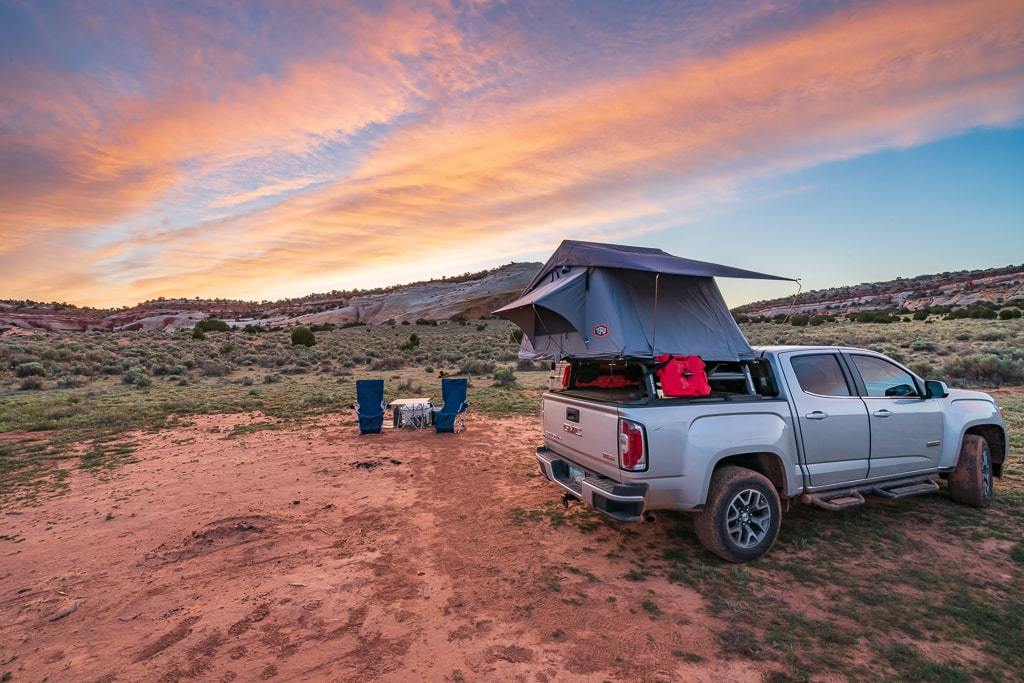A Guide to Overlanding Adventure
Overlanding, a captivating blend of off-roading prowess and immersive camping, beckons adventurers to explore the untamed corners of the world while forging a deep connection with nature. This guide serves as a comprehensive roadmap for those seeking to partake in the thrilling overlanding experience, offering insights into essential preparations, equipment, routes, and the profound rewards of this unique adventure.
Overlanding is more than just a mode of travel; it's a mindset that values exploration, self-sufficiency, and the unfiltered encounter with the great outdoors. Rooted in the art of journeying, Overlanding places emphasis on the voyage itself rather than the destination. From traversing rugged terrains to setting up camp under starlit skies, every facet of overlanding contributes to a holistic adventure that revitalizes the spirit and ignites a sense of discovery.

Overlanding = off-roading + camping
A typical overlanding trip involves setting up a tent on top of a truck or SUV, packing your camping gear, taking your car to a beach, forest, or other remote location, and charting a course.
If you’re looking for a fun and affordable way to enjoy the great outdoors in the safety and comfort of your own vehicle, read on to learn more and get started.
The Evolution of Overlanding
The term “overlanding” originates from early-1900s Australia, when ranchers would move cattle across vast land spans, creating new pathways to previously unexplored parts of the outback.
Of course, the more modern version of overlanding is a lot different from this original practice.
Sometime during the middle of the 20th century, owners of 4×4 vehicles such as Jeeps, Toyota Tacomas, and others began to explore remote destinations while living out of their vehicles. Thus, today’s widely accepted concept of Overlanding – self-reliant overland travel – was born.
In recent years, the trend has really taken off. We’re seeing everyone from seasoned adventurers to families looking to explore new or familiar areas using their car, embarking on overlanding trips. It’s a fantastic way to truly enjoy every moment of a journey through nature.
The Right Ride for Overlanding
Before you can look into destinations near or far, you need to make sure your vehicle can handle an overlanding trip. It’s a bit more strenuous than your average road trip!
Ideally, you want an SUV or truck equipped with 4×4. The vehicle should be narrow with a short wheelbase; this will allow you to travel down tight trails and nimbly navigate wooded areas.

Overlanding with a tent
Some of my favorite overlanding vehicles at the moment include the Jeep Wrangler, Jeep Gladiator, Ford Ranger, Chevy Colorado, Nissan Frontier, Toyota Tacoma, and 4Runner.
This might go without saying, but make sure that any vehicle you plan to take on an overlanding excursion is well-maintained. Check your tire pressure (including your spare, should you need to put it to use), headlights, fluid levels, and battery before setting out. You don’t want the trip to be derailed by a breakdown!
Load Up on Gear
Remember, unlike ATVs, dirt bikes, and other off-road vehicles that are designed for one specific purpose, you’ll likely be overlanding in your everyday vehicle. It needs to take you to the trail, through the trail, and get you back home on the highway safely — this requires some special gear and add-ons. A few things to consider:
Armor and protection. These are crucial for a long Overlanding trip and will help keep your vehicle in one piece. At the very least, look at bumper upgrades and steel skid plates to protect your car’s body and drivetrain.
Upgraded lights. Don’t be surprised if you find yourself driving at night more than you expected on an overlanding trip. Not to mention dark or shaded wooded areas you’ll encounter along the way! Your factory headlights likely won’t cut it. Either consider upgrading your headlights before the trip or add some off-roading lights, which are available in a variety of styles and strengths and can be easily mounted. You’ll be grateful for the added visibility!
All-terrain tires. These are an excellent add-on if you’re a more serious traveler or are planning to tackle some particularly tough terrain. An all-terrain tire will provide increased traction and grip on all sorts of surfaces like rocks, mud, and even sand. It may be an expensive investment, but it’s an invaluable tool for off-road adventures.
Hand tools and spare parts. Keep some of these on hand if you’re planning a longer trip to a more remote destination and feel comfortable making minor repairs to your vehicle. Remember you’re putting your vehicle through strenuous driving, so all its systems are under increased stress, which could cause failure. You need to make sure you’re prepared to make any necessary repairs in remote areas where a tow truck can’t reach you.
While the hope is that you’ve performed a maintenance check on your car before embarking, it’s always a good idea to also bring along some emergency supplies in case of a breakdown. This includes flares, flashlights, blankets, and extra water/non-perishable snacks.
We can’t forget about camping gear, cooking equipment, first aid kits, and communication devices. The art lies in striking a balance between comfort and necessity. That’s the other half of the overlanding trip. Car and truck-top tents have become massively popular in recent years and are great if you want to sleep right out of your vehicle or avoid any intruding wildlife in your tent.
Go anywhere! car camping in a rooftop tent.

Overlanding with a rooftop tent
Of course, you can also go more traditional and pack regular tents, particularly if you’re overlanding to a designated camping area.
Since you’ll essentially be living out of your vehicle, anything collapsible and compact is perfect for overlanding. Look for space-saving grills, cookware, chairs, and lanterns.
While the purpose of overlanding is to break from your everyday routine and get back in touch with the outdoors, I know we can’t go anywhere without our devices.
You might find it helpful to bring a dedicated GPS, particularly if you’re headed somewhere you aren’t as familiar with. This will help you stay on course without draining your phone battery.
Speaking of, bring plenty of portable chargers (we recommend the MyCharge Adventure Series chargers!) or adapters so your phone and other essential electronics don’t die on you. If anything, you’ll want to be able to stay in touch with friends during your journey and take photos!
Know Before You Go
Lastly, make sure you do your research before planning any overlanding trip. You want to be certain that overlanding and overnight camping are permitted where you’re going.

Overlanding, off-roading, camping at night
Overlanding is an off-roading/ camping adventure!
You should also map out your route ahead of time to get an understanding of the terrain, estimate the trip length, and familiarize yourself with local sights and points of interest in the area. When in doubt, state and local recreation websites are always full of resources, and you can call ahead to confirm that everything is open or ask for suggestions.
In the days leading up to your trip, check out the weather forecast and make sure you’ve packed appropriate clothes and gear for the conditions. If severe weather is expected, consider postponing the trip so you can enjoy the journey in the best possible conditions!
Overlanding is an exciting way to travel and see new places. It might be the ideal socially distant vacation strategy! Like any outdoor excursion, it does require a bit of planning and knowledge, but once you’ve done your homework and gathered the proper gear, you’ll be on the trails making unforgettable memories in no time.
Embarking on the Journey
Off-Roading Techniques: Familiarize yourself with fundamental off-roading techniques, such as proper tire inflation, ascending and descending slopes, and crossing water bodies safely. Confidence in these skills will elevate your adventure.
Camping Etiquette: Practice Leave No Trace principles, respecting the environment and minimizing your impact. Leave campsites as you find them and respect local wildlife.
Self-Sufficiency: Embrace the spirit of self-sufficiency by carrying sufficient water, food, and fuel. Be prepared for unexpected challenges and delays.
Reaping the Rewards
Connection with Nature: Overlanding offers an intimate connection with nature that few other travel modes can provide. Witness breathtaking landscapes, encounter wildlife, and savor moments of solitude in the wilderness.
Cultural Exploration: Immerse yourself in diverse cultures as you traverse through remote regions and engage with local communities. Overlanding fosters authentic interactions and enriching cultural experiences.
Personal Growth: Overcoming challenges on the trail fosters resilience, problem-solving skills, and a newfound sense of accomplishment. The journey becomes a metaphor for life's struggles and triumphs.
Camaraderie: Overlanding often leads to chance encounters with fellow adventurers on the same path. Shared stories, advice, and assistance create a sense of camaraderie that enriches the journey.
Safety First
Emergency Preparedness: Prioritize safety by carrying emergency supplies, including a first aid kit, communication devices, and tools for vehicle repairs.
Communication: Maintain communication with loved ones and fellow travelers. Satellite phones or emergency beacons can be invaluable in remote areas.
Environmental Awareness: Respect the ecosystem you explore. Avoid disturbing wildlife, follow fire regulations, and dispose of waste responsibly.
Closing Thoughts
Overlanding is an invitation to embark on a transformative expedition that transcends conventional travel. It's a dance between man and machine, an ode to the allure of the open road, and an opportunity to redefine your limits. Through rigorous preparation, unwavering respect for the environment, and a heart open to the unknown, you're poised to unveil the extraordinary world of overlanding – a realm where the journey is the ultimate destination.
